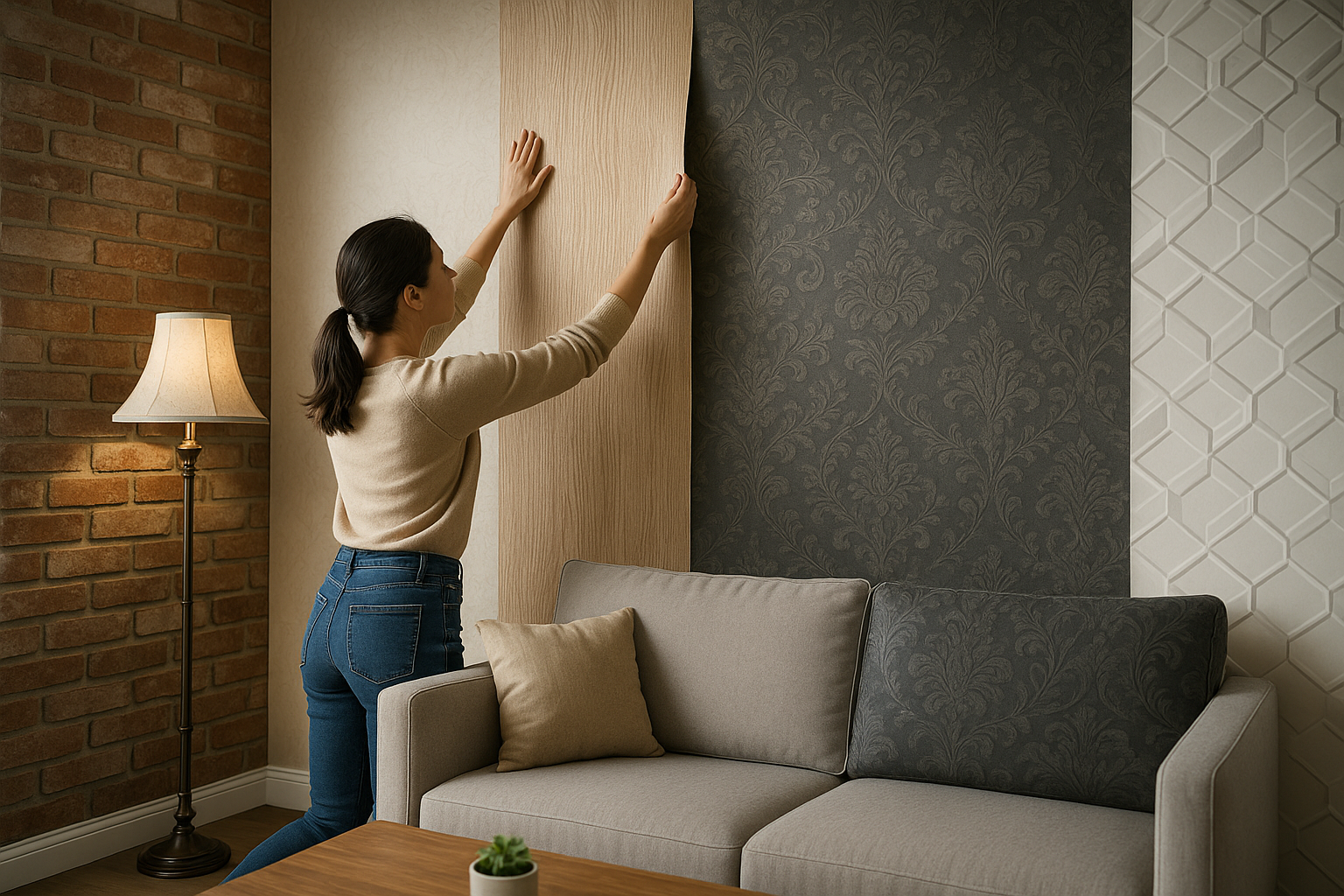Wallpaper Uses for Interior Design and Home Decor
Wallpaper is a versatile design element that can transform a room’s mood, define a focal point, and reflect personal style. From removable peel-and-stick options to traditional pasted papers, wallpaper today offers a wide range of textures, patterns, and performance characteristics. Whether you’re refreshing a home office, adding an accent wall, or coordinating wallpaper with broader interior design choices, understanding material types, installation considerations, and long-term care helps you get the results you want.

How to use wallpaper in a home office
Using wallpaper in a home office can create a professional, comfortable backdrop or an inspiring focal wall. For small spaces, choose lighter colors and subtle patterns to avoid overwhelming the room; for larger offices, bolder designs can define an area or frame a shelving unit. Consider the visual demands of video calls: a low-contrast pattern behind your desk reduces visual distraction, while a textured or fabric-look wallpaper can add warmth and perceived depth. Evaluate durability and cleanability—offices often need surfaces that tolerate occasional scuffs or cleaning.
Can wallpaper create an accent wall?
An accent wall is a simple, effective way to introduce wallpaper without committing the entire room to a pattern. Place the wallpaper behind a bed, sofa, fireplace, or desk to draw the eye and anchor furniture. When selecting a design, match scale and color intensity to the room’s size and lighting so the accent complements rather than competes. Repeat a color from the wallpaper in soft furnishings or artwork to create cohesion. For renters or short-term projects, removable wallpapers offer a low-risk option to try an accent wall.
What types of wallpaper are available?
Wallpaper types range from traditional paper to modern vinyl and non-woven materials. Vinyl and washable vinyl are durable and easier to clean, making them suitable for high-traffic areas. Non-woven papers are breathable and often easier to hang or remove, while grasscloth and textile wallpapers add natural texture but may require more careful maintenance. Peel-and-stick vinyl or fabric-backed wallpapers are popular for DIY projects because they simplify alignment and removal. Choose based on surface, expected wear, and how permanent you want the installation to be.
How wallpaper fits modern interior design
Wallpaper can reinforce many interior design styles, from minimal and Scandinavian to eclectic and maximalist. In restrained palettes, subtle textures or tone-on-tone patterns add depth; in eclectic schemes, layered patterns and bold motifs can create an intentional, curated look. Consider scale and pattern repeat in relation to furniture and architectural details: large-scale motifs suit rooms with generous sightlines, while small-scale repeats work well in compact spaces. Use wallpaper to introduce accent colors, establish rhythm across connected rooms, or provide a contrasting backdrop for artwork and shelving.
How to maintain wallpaper and care for longevity
Proper installation and maintenance extend wallpaper life. Follow manufacturer instructions for wall preparation—clean, smooth, and primed surfaces improve adhesion. For patterned rolls, account for pattern repeat and buy extra material to allow for matched seams and waste. Clean washable wallpapers with a soft cloth and a mild soapy solution; avoid abrasive cleaners and excessive moisture, especially on natural-fiber papers. Repair minor seam lifts promptly with appropriate adhesive. When removing, use recommended techniques (steam or scoring for some types) to protect drywall underneath.
Conclusion
Wallpaper remains a flexible tool in interior design and home decor, suitable for creating character in a home office, highlighting an accent wall, or adding texture and color throughout a home. Select the right material for the room’s function, account for scale and lighting, and follow proper installation and care guidelines to achieve durable, attractive results. Thoughtful use of wallpaper can elevate a space without major renovations, offering a range of finishes and styles to suit many design goals.





